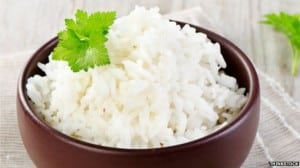After a bit of chatter on social media about Arsenic in Rice cakes, my mind was stirred to delve deeper. I’m half Sri-Lankan so my family has always eaten rice. As a child I also lived in Hong Kong, more rice. So th this was a topic that I needed to know more about, here are my findings:
The short version: Should we eat rice and rice cakes? Yes, by all means. They do contain arsenic but so do many other foods. So don’t over-rely on them, include a variety of grains in your diet.
Arsenic is a naturally occurring element found in the soil, water, air and therefore it ends up in many fruits and vegetables and grains. With Organic Arsenic there is nothing to worry about, but inorganic arsenic is a carcinogen and toxin if taken into the body in too large amounts.
The presence of arsenic in foods is not a new discovery. There are regulations set up around this to help protect us. So EFSA recommend a limit of 0.10mg/kg in food for under 3 year olds and there are similar recommendations for adult foods.
Baby Foods:
This is the area that has been causing a lot of chatter on social media. The baby rice based snacks made by the main companies in the UK say that their products fall into these recommendations and that their products are designed to be eaten as part of a varied diet. So maybe don’t just feed your child rice cakes and baby rice 😉
Rice milk should not be given as a main milk for children under 5 years due to concerns over the arsenic levels in it. So if your child is not able to drink cows milk look at soy, nut and oat milks that have calcium added to them.
Rice:
Yes rice does contain levels of inorganic arsenic. However before you all stop eating it, the amount varies depending on where the rice is grown and what type it is. There are also ways to reduce the arsenic in your rice.

Lower levels are found in:
White basmati from the USA, India and Pakistan.
Sushi Rice from the USA
It is suggested that you can safely eat 4 servings of rice a week as an adult and 2-3 servings a week as a child of this rice.
Higher amounts are in brown rice as arsenic accumulates in the outer layers of the grains, these are removed to make white rice. however don’t forget that there are other benefits to eating brown rice and it entirely depends on how often you are eating it.
How to lower the risks:
Rinse your rice in plenty of water, then drain it. Cook in plenty/excess of water rather than using the absorption method. This is the traditional Asian way, so it would appear those that eat a lot of rice know what they are doing!
If you eat brown rice more than twice a week you may want to consider changing some of those servings to a white basmati.
Try some other grains that are lower in arsenic and will provide greater variety to your diet. Buckwheat, millet, polenta, barley and bulghar wheat are examples.
Try corn cakes and other crackers instead of only eating rice cakes. Eating just one type of food is never the best option. Variety is the key to getting a range of nutrients into your body.
Once again we come back to the old dietitian principle of “all things in moderation” and having a “balanced diet”. If you eat too much of anything it can be a bad thing. Rice in itself is a nutritious grain and we don’t need to cut it out of the diet but moderate how often we eat it and how we cook it.
Good links:
http://www.consumerreports.org/cro/magazine/2015/01/how-much-arsenic-is-in-your-rice/index.htm
https://www.organix.com/arsenic
Hi there! Great balance article but I would be interested to hear your views about this for people who are gluten-free. When you look at gluten-free products they are almost always made from rice in one form or other…and you obviously have no control over where the rice has originated from. Because of this, about 2 years ago I started working on a gluten-free flour blend that didn’t contain rice (they all do…and if they don’t they contain bean flours which are no good for anyone with a sensitive tummy!) and could be used across all products (I hate ‘faffing’ and having to have lots of different flours to make things with!). I have now got the product perfected and it should be hitting the UK within the next 6 months. I’d love you to try it if you are interested!
Hi Vicki, I agree you can eat a lot of rice-based products if you are wheat/gluten free. I will certainly be more conscious of this from now on. The flour blend sounds great, I would love to try it out.